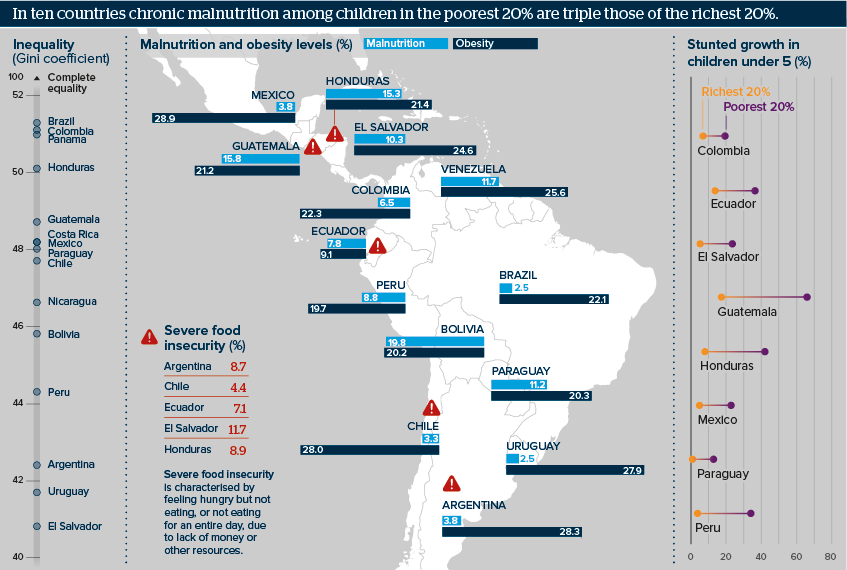Nutrition issues carry long-term cost in Latin America
Obesity and malnutrition are rising in the region, as slowing growth sees a rise in poverty
Source: UN FAO; ECLAC; World Bank; Oxford Analytica
Outlook
After falling during the first 15 years of the century, undernourishment is again rising in the region, especially South America. While this is notable in Argentina and Bolivia, the rise is mainly due to Venezuela -- up by 600,000 people between 2014-16 and 2015-17.
Food insecurity is also increasing (more so for women than men), as is obesity due to changing diets. The overweight population is estimated to rise from 33.3% in 1975 to 70% in 2030, and obesity from 7.8% to 30%, according to the UN Food and Agriculture Organisation.
Despite high inequality, Brazil’s Bolsa Familia programme has proved successful in tackling malnutrition; political changes may raise questions over its continuity.
Impacts
- These issues will affect health spending, mortality rates and labour productivity long-term.
- After falling to 3.6% in 2010-12 from 16.3% in 2000-02, Venezuela’s malnutrition rate rose to 11.7% in 2015-17, pushing migrant outflows.
- More women than men suffer from both severe food insecurity and obesity, affecting maternal and infant mortality and health.
- Indigenous and rural populations are worst affected, which may drive further urbanisation and entrench inequalities.
See also
- Latin America poverty progress is being reversed - Dec 10, 2019
- Rising emissions worsen global disaster risks - Jun 12, 2019
- Mexico health reform success turns on implementation - Jan 17, 2019
- Latin America political inequality is set to increase - Dec 12, 2018
- More graphic analysis
